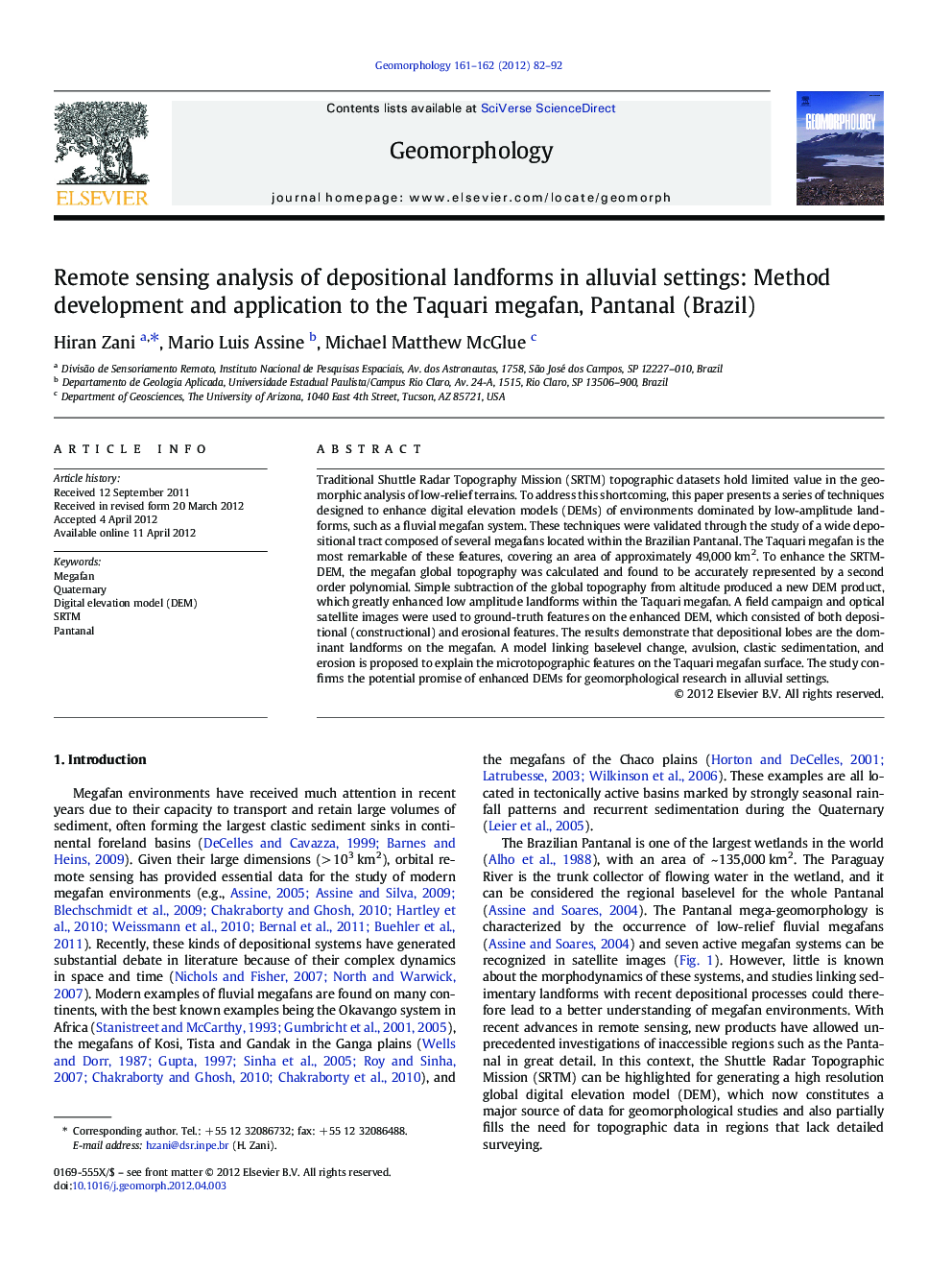| Article ID | Journal | Published Year | Pages | File Type |
|---|---|---|---|---|
| 4685178 | Geomorphology | 2012 | 11 Pages |
Traditional Shuttle Radar Topography Mission (SRTM) topographic datasets hold limited value in the geomorphic analysis of low-relief terrains. To address this shortcoming, this paper presents a series of techniques designed to enhance digital elevation models (DEMs) of environments dominated by low-amplitude landforms, such as a fluvial megafan system. These techniques were validated through the study of a wide depositional tract composed of several megafans located within the Brazilian Pantanal. The Taquari megafan is the most remarkable of these features, covering an area of approximately 49,000 km2. To enhance the SRTM-DEM, the megafan global topography was calculated and found to be accurately represented by a second order polynomial. Simple subtraction of the global topography from altitude produced a new DEM product, which greatly enhanced low amplitude landforms within the Taquari megafan. A field campaign and optical satellite images were used to ground-truth features on the enhanced DEM, which consisted of both depositional (constructional) and erosional features. The results demonstrate that depositional lobes are the dominant landforms on the megafan. A model linking baselevel change, avulsion, clastic sedimentation, and erosion is proposed to explain the microtopographic features on the Taquari megafan surface. The study confirms the potential promise of enhanced DEMs for geomorphological research in alluvial settings.
Graphical abstractFigure optionsDownload full-size imageDownload as PowerPoint slideHighlights► We provide a technique to enhance DEMs for the analysis of megafan environments. ► A second order polynomial can represent the megafan global topography. ► Landforms not observed in the SRTM DEM were enhanced in a new DEM. ► A model using the baselevel concept illustrates the Taquari megafan dynamics.
